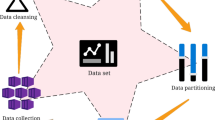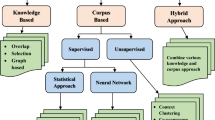Abstract
Word sense disambiguation (WSD) is a very critical yet challenging task in natural language processing (NLP), which aims at identifying the most suitable meaning of ambiguous words in the given contexts according to a predefined sense inventory. Existing WSD methods usually focus on learning the semantic interactions between a special ambiguous word and the glosses of its candidate senses and thus ignore complicated relations between the neighboring ambiguous words and their glosses, leading to insufficient learning of the interactions between words in context. As a result, they are difficult to leverage the knowledge from the other ambiguous words which might provide some explicit clues to identify the meaning of current ambiguous word. To mitigate this challenge, this paper proposes a novel neural model based on memory enhancement mechanism for WSD task, which stores the gloss knowledge of previously identified words into a memory, and further utilizes it to assist the disambiguation of the next target word. Extensive experiments, which are conducted on a unified evaluation framework of the WSD task, demonstrate that our model achieves better disambiguation performance than the state-of-the-art approaches (Code: https://github.com/baoshuo/WSD).
Access this chapter
Tax calculation will be finalised at checkout
Purchases are for personal use only
Similar content being viewed by others
References
Agirre, E., de Lacalle, O.L., Soroa, A.: Random walks for knowledge-based word sense disambiguation. Comput. Linguist. 40(1), 57–84 (2014)
Banerjee, S., Pedersen, T.: An adapted Lesk algorithm for word sense disambiguation using WordNet. In: International Conference on Intelligent Text Processing and Computational Linguistics, pp. 136–145 (2002)
Basile, P., Caputo, A., Semeraro, G.: An enhanced Lesk word sense disambiguation algorithm through a distributional semantic model. In: Proceedings of the 25th International Conference on Computational Linguistics, pp. 1591–1600 (2014)
Bevilacqua, M., Navigli, R.: Breaking through the 80% glass ceiling: raising the state of the art in word sense disambiguation by incorporating knowledge graph information. In: Proceedings of the 58th Annual Meeting of the Association for Computational Linguistics, pp. 2854–2864 (2020)
Blevins, T., Zettlemoyer, L.: Moving down the long tail of word sense disambiguation with gloss informed bi-encoders. In: Proceedings of the 58th Annual Meeting of the Association for Computational Linguistics, pp. 1006–1017 (2020)
Chen, C.F., Fan, Q., Panda, R.: CrossVIT: cross-attention multi-scale vision transformer for image classification. arXiv preprint arXiv:2103.14899 (2021)
Emelin, D., Titov, I., Sennrich, R.: Detecting word sense disambiguation biases in machine translation for model-agnostic adversarial attacks. In: The 2020 Conference on Empirical Methods in Natural Language Processing, pp. 7635–7653. Association for Computational Linguistics (2020)
Hadiwinoto, C., Ng, H.T., Gan, W.C.: Improved word sense disambiguation using pre-trained contextualized word representations. In: Proceedings of the 2019 Conference on Empirical Methods in Natural Language Processing and the 9th International Joint Conference on Natural Language Processing, pp. 5297–5306 (2019)
Huang, L., Sun, C., Qiu, X., Huang, X.J.: GlossBERT: BERT for word sense disambiguation with gloss knowledge. In: Proceedings of the 2019 Conference on Empirical Methods in Natural Language Processing and the 9th International Joint Conference on Natural Language Processing, pp. 3509–3514 (2019)
Kågebäck, M., Salomonsson, H.: Word sense disambiguation using a bidirectional LSTM. In: COLING, pp. 51–56 (2016)
Kumar, S., Jat, S., Saxena, K., Talukdar, P.: Zero-shot word sense disambiguation using sense definition embeddings. In: Proceedings of the 57th Annual Meeting of the Association for Computational Linguistics, pp. 5670–5681 (2019)
Le, H., et al.: FlauBERT: unsupervised language model pre-training for French. In: Proceedings of the 12th Language Resources and Evaluation Conference, pp. 2479–2490 (2020)
Lin, T., Goyal, P., Girshick, R., He, K., Dollar, P.: Focal loss for dense object detection. IEEE PAMI 42(2), 318–327 (2018)
Loureiro, D., Jorge, A.: Language modelling makes sense: propagating representations through WordNet for full-coverage word sense disambiguation. In: Proceedings of the 57th Annual Meeting of the Association for Computational Linguistics, pp. 5682–5691 (2019)
Luo, F., Liu, T., He, Z., Xia, Q., Sui, Z., Chang, B.: Leveraging gloss knowledge in neural word sense disambiguation by hierarchical co-attention. In: Proceedings of the 2018 Conference on Empirical Methods in Natural Language Processing, pp. 1402–1411 (2018)
Luo, F., Liu, T., Xia, Q., Chang, B., Sui, Z.: Incorporating glosses into neural word sense disambiguation. In: Proceedings of the 56th Annual Meeting of the Association for Computational Linguistics, pp. 2473–2482 (2018)
Maru, M., Scozzafava, F., Martelli, F., Navigli, R.: SyntagNET: challenging supervised word sense disambiguation with lexical-semantic combinations. In: Proceedings of the 2019 Conference on Empirical Methods in Natural Language Processing and the 9th International Joint Conference on Natural Language Processing, pp. 3534–3540 (2019)
Miller, A., Fisch, A., Dodge, J., Karimi, A.H., Bordes, A., Weston, J.: Key-value memory networks for directly reading documents. In: Proceedings of the 2016 Conference on Empirical Methods in Natural Language Processing, pp. 1400–1409 (2016)
Moreo, A., Esuli, A., Sebastiani, F.: Word-class embeddings for multiclass text classification. Data Min. Knowl. Disc. 35(3), 911–963 (2021). https://doi.org/10.1007/s10618-020-00735-3
Moro, A., Raganato, A., Navigli, R.: Entity linking meets word sense disambiguation: a unified approach. Trans. Assoc. Comput. 2, 231–244 (2014)
Pasini, T., Navigli, R.: Train-O-Matic: supervised word sense disambiguation with no (manual) effort. Artif. Intell. 279, 103215 (2020)
Raganato, A., Bovi, C.D., Navigli, R.: Neural sequence learning models for word sense disambiguation. In: Proceedings of the 2017 Conference on Empirical Methods in Natural Language Processing, pp. 1156–1167 (2017)
Raganato, A., Camacho-Collados, J., Navigli, R.: Word sense disambiguation: a unified evaluation framework and empirical comparison. In: Proceedings of the 15th Conference of the European Chapter of the Association for Computational Linguistics, pp. 99–110 (2017)
Tripodi, R., Navigli, R.: Game theory meets embeddings: a unified framework for word sense disambiguation. In: Proceedings of the 2019 Conference on Empirical Methods in Natural Language Processing and the 9th International Joint Conference on Natural Language Processing, pp. 88–99 (2019)
Vial, L., Lecouteux, B., Schwab, D.: Sense vocabulary compression through the semantic knowledge of WordNet for neural word sense disambiguation. In: Proceedings of the 10th Global WordNet Conference, pp. 108–117 (2019)
Wang, M., Wang, Y.: Word sense disambiguation: Towards interactive context exploitation from both word and sense perspectives. In: Proceedings of the 59th Annual Meeting of the Association for Computational Linguistics and the 11th International Joint Conference on Natural Language Processing, pp. 5218–5229 (2021)
Acknowledgment
The research work is partly supported by National Nature Science Foundation of China under Grant No. 61502259, and Key Program of Science and Technology of Shandong under Grant No. 2020CXGC 010901 and No. 2019JZZY020124.
Author information
Authors and Affiliations
Corresponding author
Editor information
Editors and Affiliations
Rights and permissions
Copyright information
© 2022 The Author(s), under exclusive license to Springer Nature Switzerland AG
About this paper
Cite this paper
Kan, B. et al. (2022). Word Sense Disambiguation Based on Memory Enhancement Mechanism. In: Memmi, G., Yang, B., Kong, L., Zhang, T., Qiu, M. (eds) Knowledge Science, Engineering and Management. KSEM 2022. Lecture Notes in Computer Science(), vol 13369. Springer, Cham. https://doi.org/10.1007/978-3-031-10986-7_20
Download citation
DOI: https://doi.org/10.1007/978-3-031-10986-7_20
Published:
Publisher Name: Springer, Cham
Print ISBN: 978-3-031-10985-0
Online ISBN: 978-3-031-10986-7
eBook Packages: Computer ScienceComputer Science (R0)




